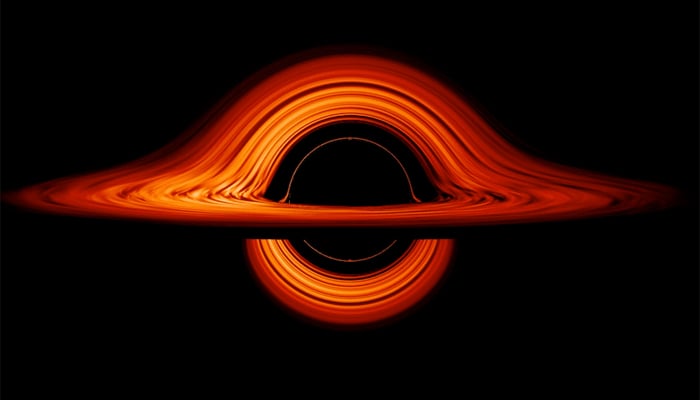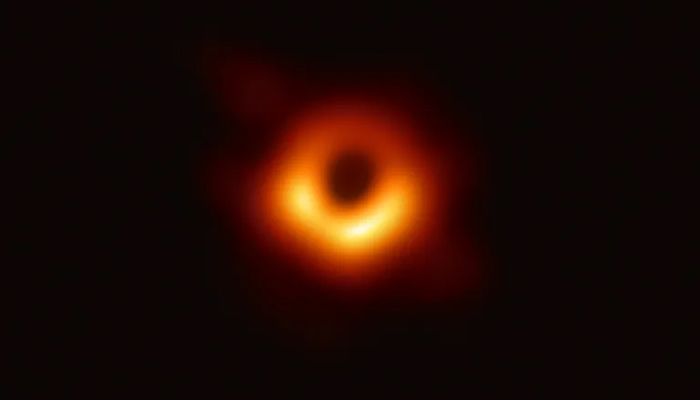Scientists prediction turns into reality after finding this super massive black hole
Earlier, there was prediction that the spinning of the black hole causes the massive emission of jets
September 29, 2023

In yet another remarkable advance in seeking a greater understanding of the cosmic mysteries, scientists have discovered fresh evidence of a spinning supermassive black hole that is residing in our neighbouring galaxy Messier 87.
The observations about the supermassive blackhole — hosting an emission of powerful jets — were carried out with the help of the Event Horizon Telescope.
Earlier, there was a prediction by scientists that the spinning of the black hole causes the massive emission of jets and now the current findings corroborate their anticipation.
Dr Kazuhiro Hada, of the National Astronomical Observatory of Japan and co-author of the study noted: "After the success of black hole imaging in this galaxy with the Event Horizon Telescope, whether this black hole is spinning or not has been a central concern among scientists."
"Now anticipation has turned into certainty. This monster black hole is indeed spinning."

The galaxy is located at a distance of 55 million light years from the Earth, hosting a black hole 6.5 billion times more massive than our Sun.
A light year is the distance light travels in a year, 5.9 trillion miles (9.5 trillion km). It was observed being plundered by a supermassive black hole at the heart of a spiral-shaped galaxy.
Black holes are massive objects present in nearly the centre of nearly every giant galaxy. It also forms when a giant star dies and collapses under its own weight.
These space objects are so powerful that they pull inside everything which enters their event horizon. Not even light can escape from their potent pull.
According to theories of physics, a black hole’s spin is responsible for this phenomenon and scientists believe that charged particles in the disk produce a potent magnetic field.
As the black hole spins, it takes the field with it, winding up the field in a way that can push particles away from the black hole with the help of jets.
The findings published in the journal Nature observed data of M87 from a global network of radio telescopes from 2000 to 2022.
Findings revealed that there is a recurring 11-year cycle in the jet, which precessed around a central point at the edge of the black hole, pointing towards a misalignment between the cosmic giant’s spin axis and the accretion disk. This causes the jet to wobble like a spinning top.
"Detecting this precession provides unequivocal evidence that the supermassive black hole in M87 is indeed spinning, thus enhancing our understanding of the nature of supermassive black holes," the authors noted.
"That’s exciting because it’s telling us that it can only precess if the black hole has non-zero spin. It’s an indirect but extremely strong confirmation of spin," Dr Ziri Younsi, an astrophysicist at UCL, said.
Younsi added that a black hole’s spin could, in future, give insights into the cataclysmic events that led to the formation of the supermassive black hole.
"The fact that it's spinning and there's a tilt tells you that something pretty crazy happened in the past," he said.
"At some point in its history, something violent happened. It provides tantalising hints that that might be the case."











